Care and maintenance of barbs
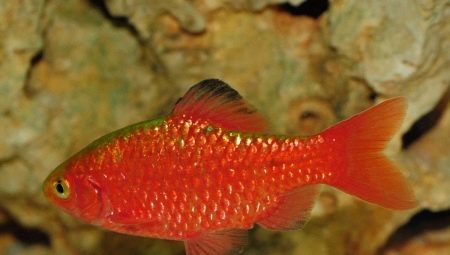
If the aquarium is called "barbusyatnik", it means that it was completely occupied by barbs - cute and very cute fish. Of course, we are talking about a slang name. Barbs are fish of the carp family, the carp order, the ray-finned class. You can often hear how they are called barbel or even puntius fish. There are several types of barbs, so everyone who wants to settle these variegated pets in a small home reservoir should familiarize themselves with the conditions of their maintenance and the basic rules of care.
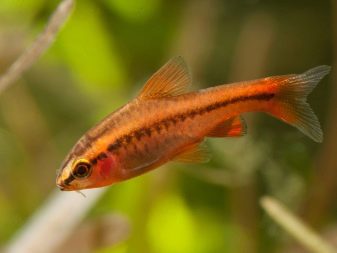
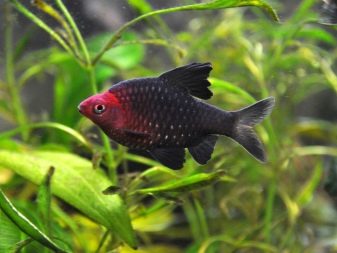
Growing conditions
If you buy small species of barbs, then they are content with an aquarium of 40-50 liters. And it is desirable that the tank does not imply the presence of neighbors, since these fish are not the most friendly. And it is unlikely that neighbors are needed in such a small aquarium: the barbs themselves are beautiful, bright, nimble, even it is interesting to watch them alone. If you buy a flock of barbel beetles of 5–7 individuals, they need a 70 liter container for a comfortable existence. If you also plan decorations in the aquarium, the volume of the tank can be increased.
Temperature requirements are very clear - not higher than +24 degrees, not lower than +20 degrees. All this favorable interval makes the barbs feel great.

Additional water heating is rarely required, unless in autumn, before heating is switched on on really cold days.
The barbs do not find fault with the composition of the water: these beauties love the flow, so it would be nice to have an aerator or pump in the aquarium that creates the movement of the water layer.
The acidity of the water should not exceed 7.5 pH, the hardness - 4-15. But the parameters tend to change according to the type of barbel living in the aquarium. It is convenient to keep the fish in small flocks. If you think it’s a good idea to buy two barbel to share with other inhabitants, you are wrong. If properly cared for, barbs can live in captivity for up to 4 years.
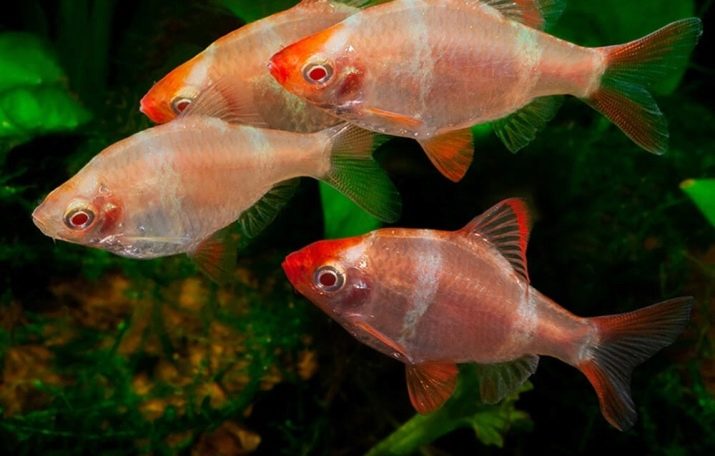
It is worth paying attention to the following information about caring for barbel:
- when picking up the soil, try to find coarse river sand, gravel without sharp corners or small pebbles; it is not difficult to take care of them, it is enough just to regularly clean them from organic matter; it is good if the soil is dark, as this creates the necessary contrast with the color of the barbs and even more draws attention to the fish;
- special filters are not needed in the "barbusyatnik", but there should be no doubts about the quality of aeration;
- a lot of plants in an aquarium with barbel is a mistake, the fish are too active and energetic, they need space for "running around"; but also darkened places in the aquarium are needed so that the pets can hide if necessary;
- when choosing plants, pay attention to hard-leaved specimens, plants with a strong root system; if the flora is too soft, the fish will start trying it on the tooth, since they also need fiber in the body;
- you can pointwise form places densely populated with algae, they will be a shelter for fish; the water surface can be covered with floating flora;
- the lighting for the barbel should be bright, these are not the inhabitants of the underwater kingdom who prefer to be in the shade.
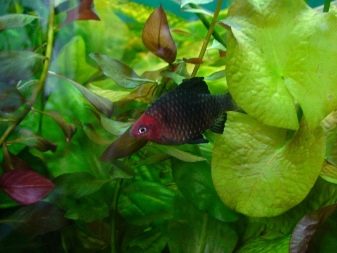
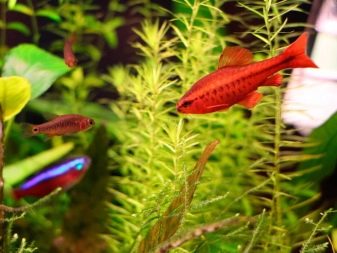
Change 20% of the aquarium water once a week (at least), maximum 40%. It is advisable to defend the water for the change for 1.5–2 days.
Usually, longhorns are not so critical of the lack of oxygen in the water, but if you notice that pets are swimming close to the surface of the water, as if lifting their head up, immediately change the water.
Rules for caring for different species
Aquarium fish of the same family are divided into several types. And each species has its own "character". Let's take a closer look at how to maintain and care for different species.
Shark's
He prefers to live in an aquarium of 200 liters, he got his name for the external resemblance to a shark (mainly due to the fins).
And in gluttony, the barbel is not much inferior to the shark. Although the formidable appearance does not match the character of the barbus, it is not shy.
But in home aquariums, this kind of barbel is actually not found, so it makes no sense to describe the conditions for their maintenance. However, they do not go against the standard requirements for the content of barbs.
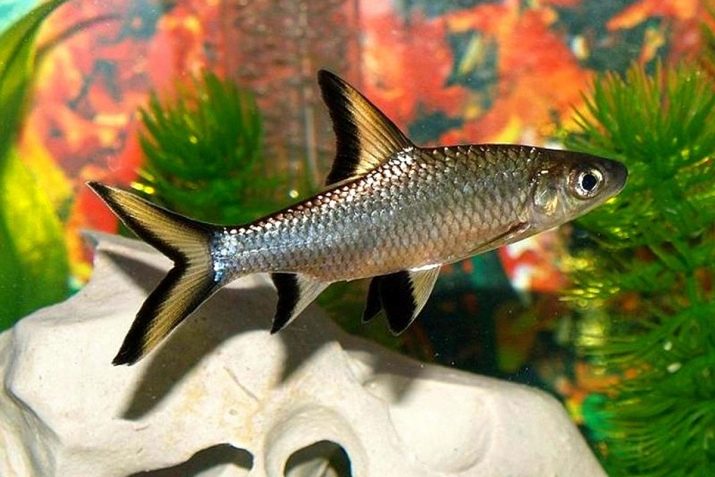
Sumatran
And this is a frequent inhabitant of domestic mini-reservoirs. And all thanks to the very bright color and unpretentiousness of the fish. The main requirement is clean and fresh water in the container, timely "cleaning" and the absence of overgrown plants.
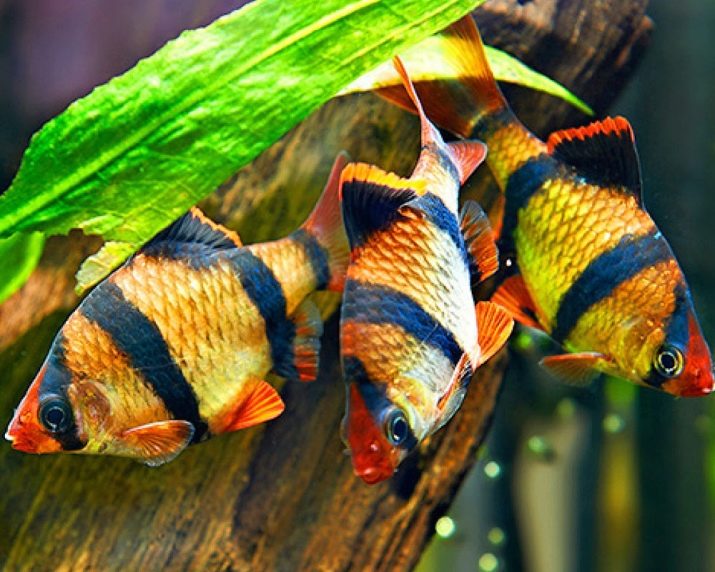
Cherry
In the aquarium for such beauties, there should be a powerful aerator and filter; you need to feed cherry fish 2-3 times a day. Commercial or dry food is given in small portions. This is a non-aggressive underwater inhabitant that gets along well with ordinary neons.
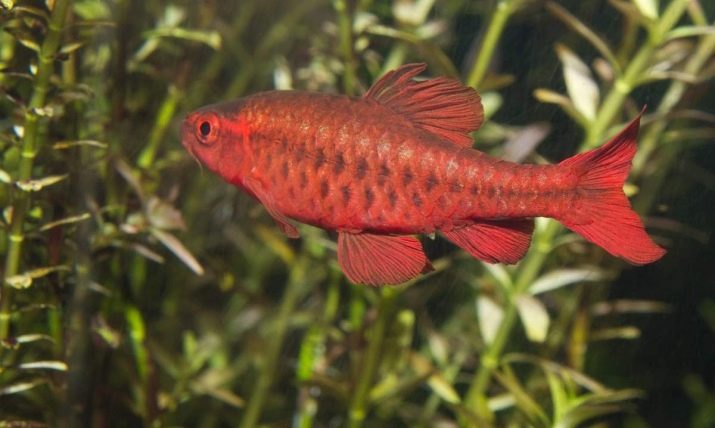
Green
Such a relative needs cooler water than the bulk of barbs. Even + 17– + 20 degrees for "complete happiness" is enough for him.
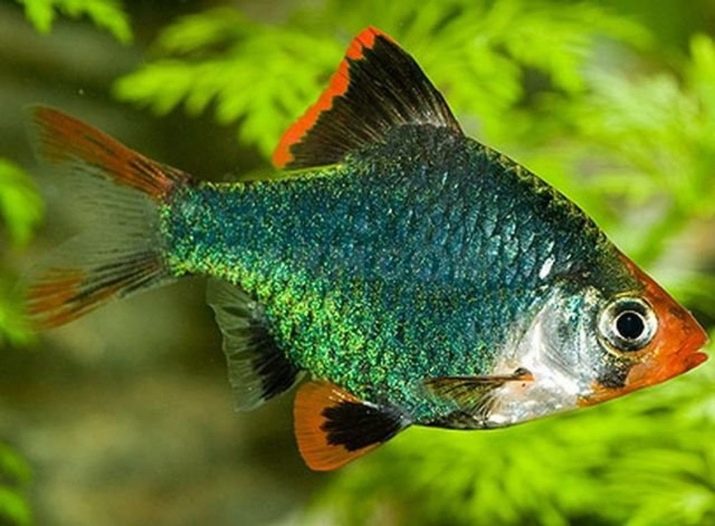
Black
He prefers to live in slightly acidic and soft water, content with dim lighting.
Fine, dark sand is preferred as a substrate.
He eats any quality food. The fish is agile, so it will not get along with slow neighbors.

Gold
This species prefers a sandy substrate, weak water flow and dim lighting. It will not take root in brackish water. This is a peaceful, active fish. They live in flocks of 8-10 individuals. He is unpretentious in nutrition, the main requirement is to include herbal ingredients in the daily diet.
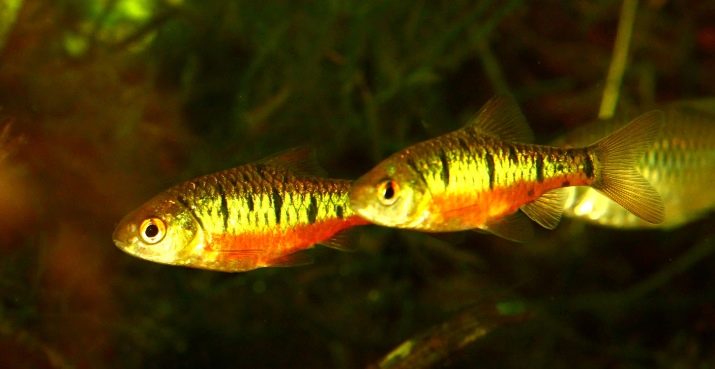
Hard-lipped
Such barbel needs large reservoirs, soft water, sandy soil, weak current.
There are about 5 individuals in the flock, the fish is considered friendly and calm. It is an omnivorous pet that devours any drowning food.
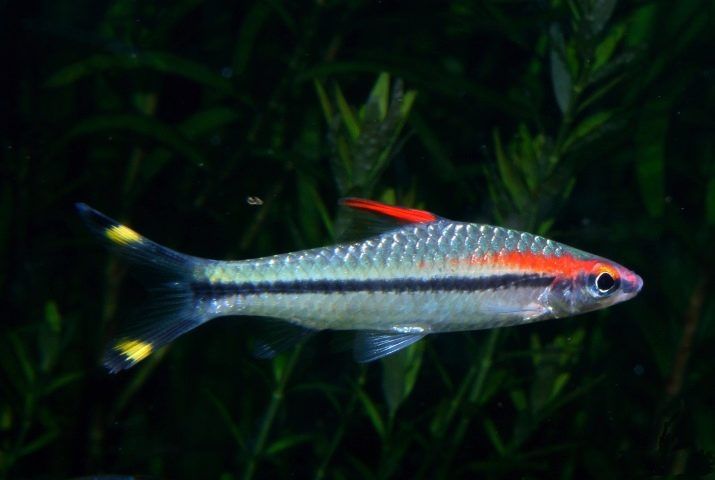
Hong Kong
A cheerful and active fish that is suitable for the acquisition of novice aquarists. Longhorns need powerful water filtration and regular fluid changes. Joint keeping with fish with long or veil fins is not recommended.
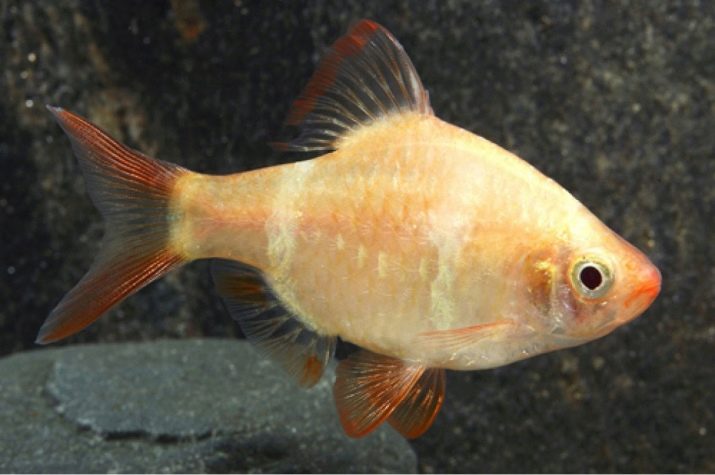
Hazel
This species prefers to live in a spacious reservoir, with fine gravel and dense side thickets. These are omnivorous fish that are happy to be taken for large food, they need plant components in their food.
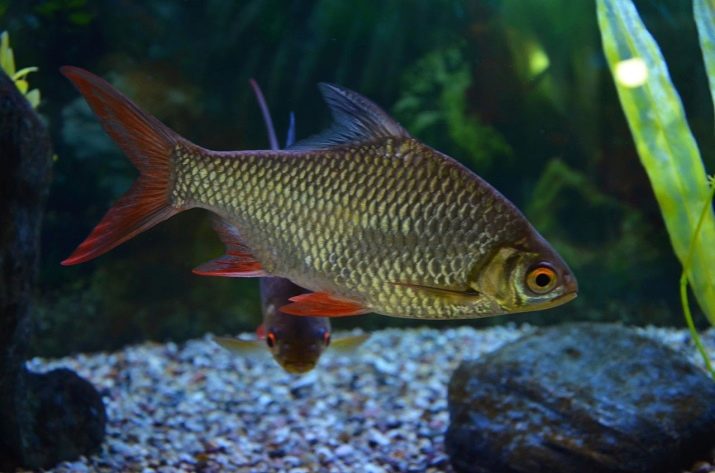
And this is not even half of all types of barbs! The choice of barbel is really great, in beauty they are not inferior to each other.
Feeding rules
For novice aquarists, everything is new, and so are the feeding rules. Fortunately, barbs are very unpretentious fish to eat. Almost all barbel species happily eat frozen food, both dry and live. Of the live options, the following are preferred:
- bloodworm;
- daphnia;
- Cyclops;
- tubifex;
- frozen daphnia and bloodworms.
Barbs actively eat dry food based on dried daphnia, as well as industrial food in granules. Adult fish need herbal supplements, if they are not enough in food, they will go to the flora of the aquarium.
The main requirement for feeding is a balanced and varied diet.

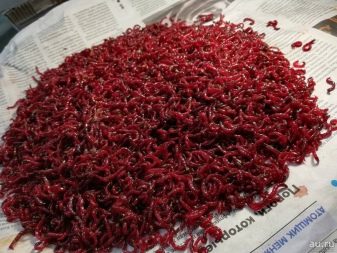
Most aquarists prefer to buy dry food from well-known brands. But even if there is no doubt about the reputation of the manufacturer, study the instructions, make sure that everything is in order with the expiration date of the product. Longhorns feed for about 3 minutes, then the rest of the food will fall to the bottom. The bottom must be cleaned of excess food, since the rotting processes at the bottom can very much harm the barbs.
Possible problems
The first and most common problem is the wrong neighborhood. If you made a mistake in populating the barbel, they will behave aggressively. Conflicts can be both in-house and concerning other fish. If you settle gum barbs with slow fish, almost 100% expect an open conflict. Yes, and "did not agree with the characters" - a term that refers not only to people. This also happens with underwater inhabitants.
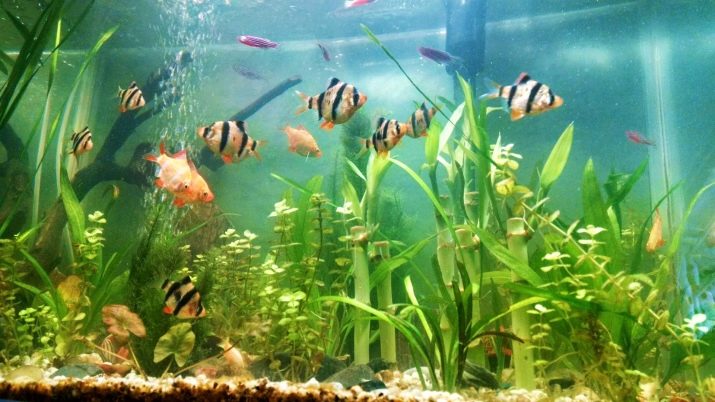
And although by nature barbs are not predators, they will swallow the fry of other fish without thinking.
Finally, due to their very active and fast manner of movement, they can cause discomfort to other fish species. Longhorns will get along with a clown fight, gourami, large tetras, labeo, zebrafish, pecilia. True, it is still worth looking back at a specific type of barbs. Longhorns will definitely not get along with the following fish:
- minors;
- cichlids;
- thorns;
- analysis;
- shrimps;
- scalars;
- mollies;
- telescopes.
Finally, like all living things, longhorns get sick. And some diseases of quicksands can cause their death. One of the most common diagnoses is branch rot. This ailment is fungal in nature. First, the vessels in the gills of fish are clogged, then the gills themselves are destroyed.
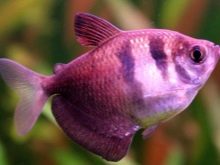
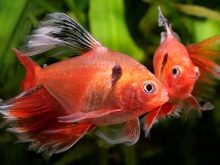
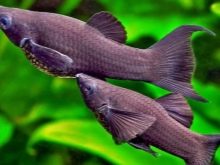
The disease can be identified by loss of appetite, loss of response to stimuli, fish near the surface of the water, frequent rubbing and stones and plants, dark blue spots in places where tissue is dying off.
Treatment only helps at an early stage of the disease, to prevent illness, once every 3 months add "Rivanol" to the water.
If the aquarist is not caring and serious, his pets can get dropsy. If the fish has a swollen belly, this may be the first sign of dropsy. More often, the disease is provoked by sharp temperature jumps or a low percentage of oxygen in the aquarium. The barbel patients with dropsy are very lethargic, they have protruding scales and a noticeable protrusion in the region of the anus. Alas, but it is impossible to cure the fish, they must be destroyed... After that, it is worth completely replacing the water in the tank, and keeping all the plants in a weak manganese solution.

Important! If dropsy is detected at a very early stage, you can try to save the fish. Move it to an impromptu bath, where add 80 ml of chloromycetin to 10 liters of water. The whole procedure takes about half an hour.
Rarely, but this method helps.
Because barbs are fish that do not suffer from a poor appetite, they may be at risk of obesity. And this ailment is very dangerous for pets. If you are confident in the quality of the water in the aquarium, if there are no signs of infection, and the barbs are dying, it is highly likely that obesity is the problem. This often happens when there are children in the house or the owners often offer them to feed the barbel to please the guests. If you notice that the body circumference of the fish has increased, that they have ceased to be as mobile as before, that they are apathetic, urgently adjust the feeding regime.
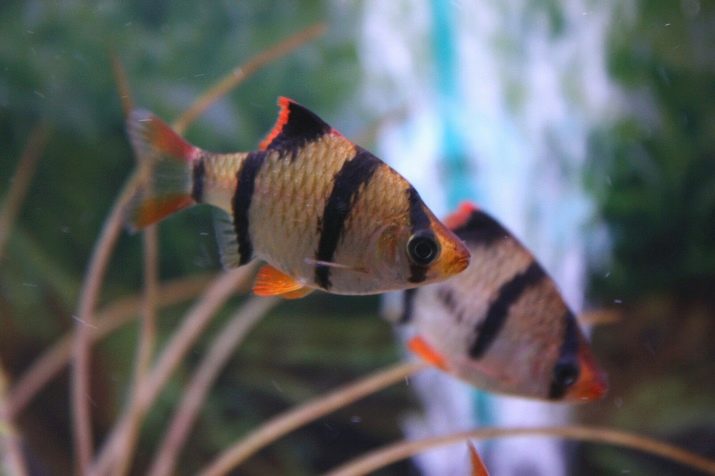
In general, with a well-designed care regime for the aquarium and its inhabitants, problems with fish do not arise.
They are beautiful, funny, nimble, it is a pleasure to watch such lively ones. If the family has small children, you need to teach them not to try to feed the fish themselves (only together with an adult), never open the lid of the aquarium, and not frighten the inhabitants. With a respectful attitude towards living things, babies will grow up caring and attentive, you will teach them to love and protect nature. And small and active barbs will help all households to leave problems and affairs outside the door of the house, since contemplation of an aquarium is a real relaxation and reboot.
For the care and maintenance of barbs, see below.








